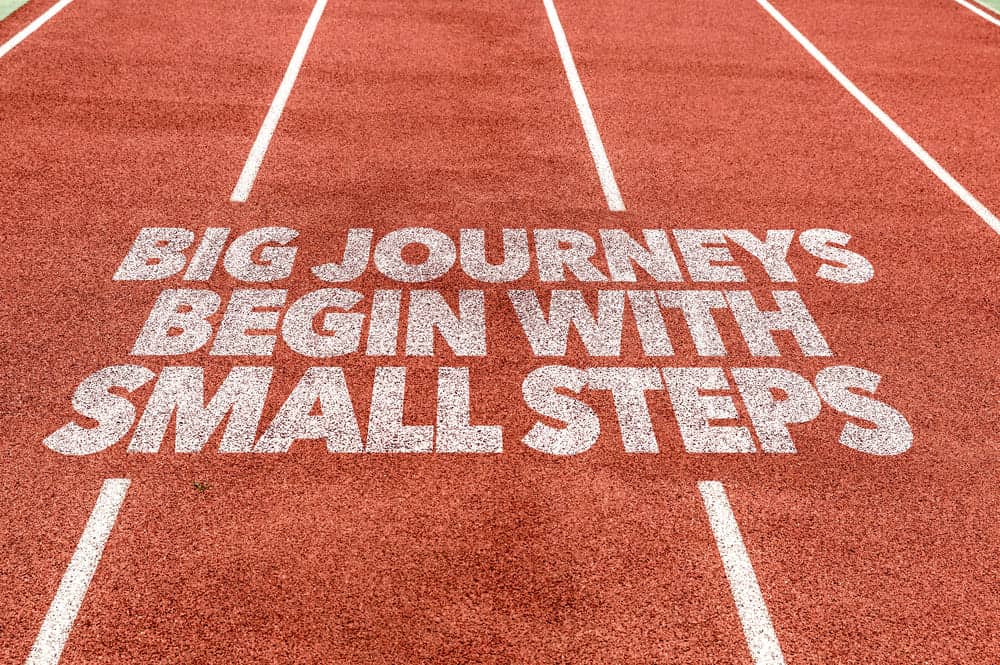You know running is a great way to get fit, lose weight, and feel better. But if you’ve never run before or it’s been a while since you’ve run, you probably have tons of questions about how to start running.
Does it matter what shoes I wear? How long should I run? Should I follow a beginner running plan? Will I get sore?
We’re going to make it easy for you. We’ve designed this comprehensive guide to help you learn how to get into running. It’ll give you guidance and inspiration to get started on the right foot.
In addition to giving you a beginner’s guide to running, we’ve also included a BONUS 8-week beginner running plan to take you from the couch to a 5k in 8 weeks. It’s like having your own personal running coach every step of the way.
How To Start Running – What To Do Before Your First Run
Here are a few simple things you should prepare before you take your first step. Many who don’t stick with running forget to do at least one of the following things, so make sure you don’t miss any!
1. Remind Yourself Why You Want to Start Running
You need a reason to run. Without a reason, it’ll be hard to stick with it. So why do you want to run?
Do you want to run to be healthier? Maybe you got some bad feedback from your doctor or have been living a sedentary lifestyle for several years and you need to be more active.
Do you need to lose some weight? Those late-night cookie runs have caught up with you and you need to burn some extra calories. Running is an easy way to do that.
Maybe you’re looking for that sense of accomplishment? Few things can be such a boost to your confidence and self-esteem as setting a goal and attacking it head-on.
Now that you’ve got your reason for running, I want you to imagine your future self, 3 months from now. Get out a piece of paper and write down your reason for running. Then write a brief description of yourself, 3 months into the future. Describe how your life will have changed for the better after having stuck with a regular running routine.
Did you do it?
Anytime you feel like giving up, read what you wrote. It will give you the focus and the drive to keep on running.
2. Prepare Your Expectations
Running will improve your life in a surprising amount of ways. But does that mean that you’ll enjoy every single run? That you’ll just jump out of bed on a cold, rainy morning ready to hit the pavement?
Uh, no.
Expect to be a little uncomfortable. Expect to be sore sometimes. Expect to get up and have to fight with a warm bed telling you to stay “just five more minutes.”
When you expect challenges, they won’t take you by surprise. You’ll be able to face them head-on and even mentally prepare to overcome them.
Fortunately, you can also expect some amazing benefits! For example:
- Weight Loss
- Stress Relief
- Other Daily Activities Will Seem Less Strenuous
- Many More!
Click here to learn more about the benefits of running.
Having a purpose and knowing what to expect can only get you so far. You also need to know where you’re going. Let me explain.
3. Choose a Training Plan and Goal
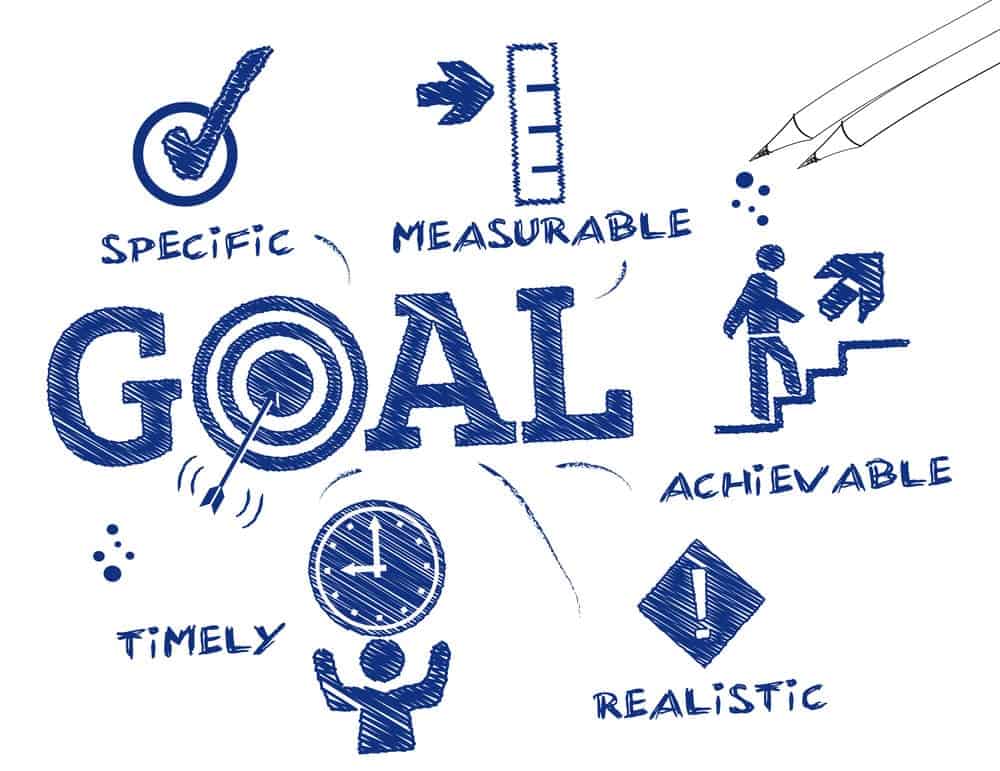
It’s been said that a goal without a plan is just a wish.
That’s 100% true when it comes to running. So before you go on your first run, set a specific goal and come up with a defined plan to achieve it.
It’s really easy, especially if you check out our 8-week beginner running plan.
It’s designed for new runners who are just starting out. You get a clear goal (5k run) and a defined plan to reach that goal over the course of just 8-weeks.
4. Get the Right Gear
The last thing you need to do before going on your first run is to get the right gear.
Now we’re not saying that you have to go out and spend hundreds of dollars on expensive running gear. A few simple things will suffice.
- Running Shoes
- Clothes for the Right Climate
- Something to Hold Your Stuff
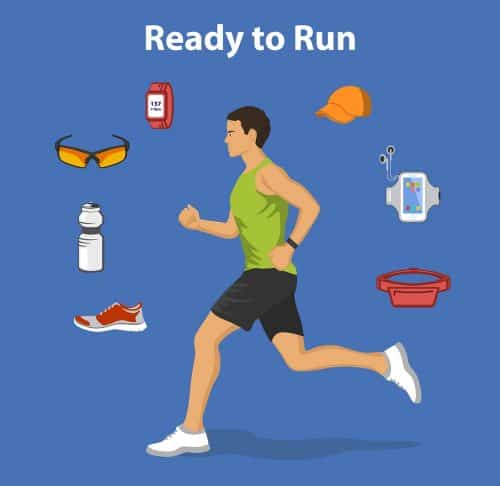
Shoes
If you’re on a limited budget, we would suggest focusing first on getting a good pair of running shoes. Contrary to popular belief, you can get some good shoes for well under $100 that’ll work well as your first runners.
Having the right pair of shoes for your feet can actually help you run longer and with less pain. So make sure you get a pair that fits your feet correctly. Do you have high arches? Are you an overpronator? Not sure what we mean? Check out this great video so you can know what to look for when choosing a running shoe.
Clothes for Running in Hot Weather

You don’t have to go out and buy a new wardrobe if you’re running in a hot climate.
Just make sure you run with light-colored and loose-fitting clothing. Tight clothing will keep your body from breathing naturally and dark colors will absorb more of the sun’s heat.
Clothes for Running in Cold Weather
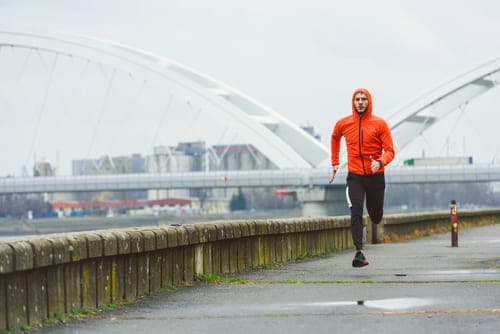
It can be hard to know how to dress for cold weather running. A good rule of thumb is that you dress as if the temperature is 10-20 degrees warmer than it actually is.
You might feel a little cold when you first head out, but after a few minutes of activity it’ll be just right.
Something To Hold Your Stuff
This is one of the most common things new runners forget. Where are you going to carry your wallet and identification? What about your phone and keys?
Don’t think you can just put them in your pocket.

Unless you have running shorts with a special inside pocket to hold a phone or ID, that’s a sure-fire way to lose your stuff.
The most common solutions are a good old fanny-pack or an armband. They’re cheap and it’s easy to slip your phone and ID into either, especially if you buy one designed for runners.
Ready for Your First Run? – Things You Might Be Wondering

Now that you know why you’re running, you’re expecting some challenges, you have a defined goal and the essential running gear, you’re ready for your first run!
But you still might have a lot of questions going through your mind, like…
How sore will I be after my first run?
A lot depends on how active you’ve been recently and how hard you push yourself on your first runs. As you’ll see later in our 8-week running plan for beginners, we encourage you to start slow.
Remember it’s a marathon, not a sprint. Take it slow and easy the first few days and if anything, err to the side of caution. You may also want to read our post on how to run properly.
However, if even short easy runs are a big step up from your current level of activity, you can expect to have some sore muscles the next day. But keep on going! In fact, the best way to get rid of sore muscles is to keep them active.
Does it matter if I run on a treadmill?
The quick answer is, no. A treadmill provides a slightly softer running surface and is a little easier on your joints. It’s also easy to keep track of your time and distance.
One thing to keep in mind is that on a treadmill you don’t have to contend with wind resistance. So to get a similar level of resistance while running on a treadmill, be sure to set the incline at level 1 or 2. Check out our review on the best manual treadmills.
Should I take along some water?
It can never hurt to have some water with you. However, if you’re following our 8-week running plan for beginners, you’ll notice the first couple of runs are quite short. That means it isn’t necessary to bring along water as long as you are well-hydrated beforehand.
–Read in a lower section for more specific guidelines on how much you need to drink.–
What should I eat before my run?
It’s best not to eat anything directly before a run as that could cause an upset stomach. You remember how your parents used to say – “You can’t go swimming until half an hour after you’ve eaten!”
It’s best to follow a similar rule with running. In fact, for most people having a snack an hour or two before a run works best. Try one of these foods an hour or two before a run:
- Half a banana with almond butter
- Bowl of oatmeal with berries
- Piece of toast with peanut butter
You want foods that are easy to digest but that won’t cause a sugar crash. That’s why it’s best to avoid things that are high in fiber, sugar or protein. Foods you don’t want to eat before running are:
- High-fiber veggies
- Cheese and meat
- Legumes
- Candy
I Started My Running Program – What Now?
Once you’ve started our running plan for beginners and made it through your first week, what things will help you keep going?
Stick to Your Plan
A week or two into a new exercise plan the novelty starts to wear off and your resolve is tested. Stick with it, you can do it!
Do you remember before you started running, when you wrote down the reason why you wanted to get into running? You also should’ve written down a description of your future self after having stuck to a running plan.
This would be a good time to review that. It will motivate you to stick with your plan and keep working towards your goal.
But does this mean that you should stick to your program at all costs? Hopefully you checked with your doctor before beginning a new exercise program. But if you didn’t and for some reason running has exacerbated an existing health issue, go to your doctor right away.
Pay attention to your body. Some achy joints and sore muscles are normal, especially after your first few runs. But if you’re feeling worse pain than that, then please go get checked by your doctor.
What can you do to keep you and your body safe? Let’s see.
Stay Safe
As you progress through your first week on the running plan to more challenging weeks with harder runs, it’s important to do a few things to help you and your body stay safe while running.
- Warm-Up
- Run Against Traffic
- Make Sure You’re Visible
- Cool Down
Warm-Up
Always do a warm-up before running. This is especially important if you’re a morning runner. A good warm-up might involve a few minutes of walking, followed by some light stretching.
NOTE: Never stretch a “cold” muscle, it could actually cause injury. Always make sure to walk or jog lightly before stretching your leg muscles.

If you run on the road, always run against traffic so you can see the cars coming towards you. Never assume that drivers can see you. More and more people drive while being distracted by their phones, so it’s important that you always be aware of your surroundings.
Make Sure You’re Visible
If you run early in the morning or late in the evening, be sure to wear reflective clothing. Don’t rely just on the reflective patches on your running shoes. You could try something like these reflective armbands to make sure others will see you.
Even if you run during the day, it’s good to wear high-vis clothing to make sure you really stand out. If you do plan to run at night, you can check out our review about the best lights for running at night.
Hydrate
As you work up to longer runs, it’s even more important that you stay hydrated. But you don’t want to overdo it. Drinking too much water can be almost as much of a problem as drinking too little. So how much do you need?
Here’s a general idea:
- 4-6 oz. every 20 minutes for an average pace
- 6-8 oz. every 20 minutes for a fast pace
Hydration doesn’t just happen during your run. It’s important to make sure you’re hydrated even before you start warming up. An hour or two before you start, drink at least a large glass (16oz.) of water. This will ensure you’re plenty hydrated for the start of your run.
Then, when you get back from your run, it’s good to have at least another large glass of water to keep replenishing any lost fluids.
Common Questions New Runners Have After Their First Couple of Runs
I get side stitch. How can I prevent this?

Few things can ruin a good run as fast as a bad case of side stitch. Side stitch is a common occurrence, especially among new runners. But still, scientists aren’t exactly decided on the exact cause or a sure-fire way to prevent it.
Some think it’s a diaphragm spasm. The diaphragm is a sheet of muscle that extends across the abdomen and the lower part of the rib cage. Just like any other muscle, when it gets worked more than it’s accustomed to, it can fatigue and spasm.
So how can you prevent side stitch? Here are some things that can help.
- Strengthen your core muscles
- Don’t drink too much directly before a run
- Don’t eat high fiber foods before a run
- Focus on running with good posture while inhaling fully
Since I started running, I have more of an appetite. Does this mean I should eat more?
A lot of people notice this when they first start an exercise routine. Maybe on days you run, you seem to have a never-ending appetite.
This is normal. Your body is burning more calories so naturally, it’s looking for more food. Intense physical exercise can even raise your metabolism for several hours after a workout. This is known as the afterburn effect.
Since you’re burning more calories, technically you can eat more. However, be careful not to overdo it, especially if your goal is to lose weight.
Don’t fall into the common mistake of thinking – “I ran for 20 minutes this morning, that means I can have a double order of french fries!”
If you’re unsure about how many calories you’re burning on your runs, here’s a general idea:
- 160lb person at 5mph (12:00 mile) = 630 calories an hour
- 200lb person at 5mph (12:00 mile) = 800 calories an hour
- 160lb person at 8mph (7:30 mile) = 900 calories an hour
- 200lb person at 8mph (7:30 mile) = 1,120 calories an hour
Here’s a handy calculator to see how many calories you burn while running.
Can I drink sports drinks like Gatorade when running?
You can, but most people don’t really need them. Regular water works just fine.
During physical activity your body loses electrolytes through sweating. Electrolytes are nutrients, like sodium, that are necessary for important bodily functions such as muscle contractions.
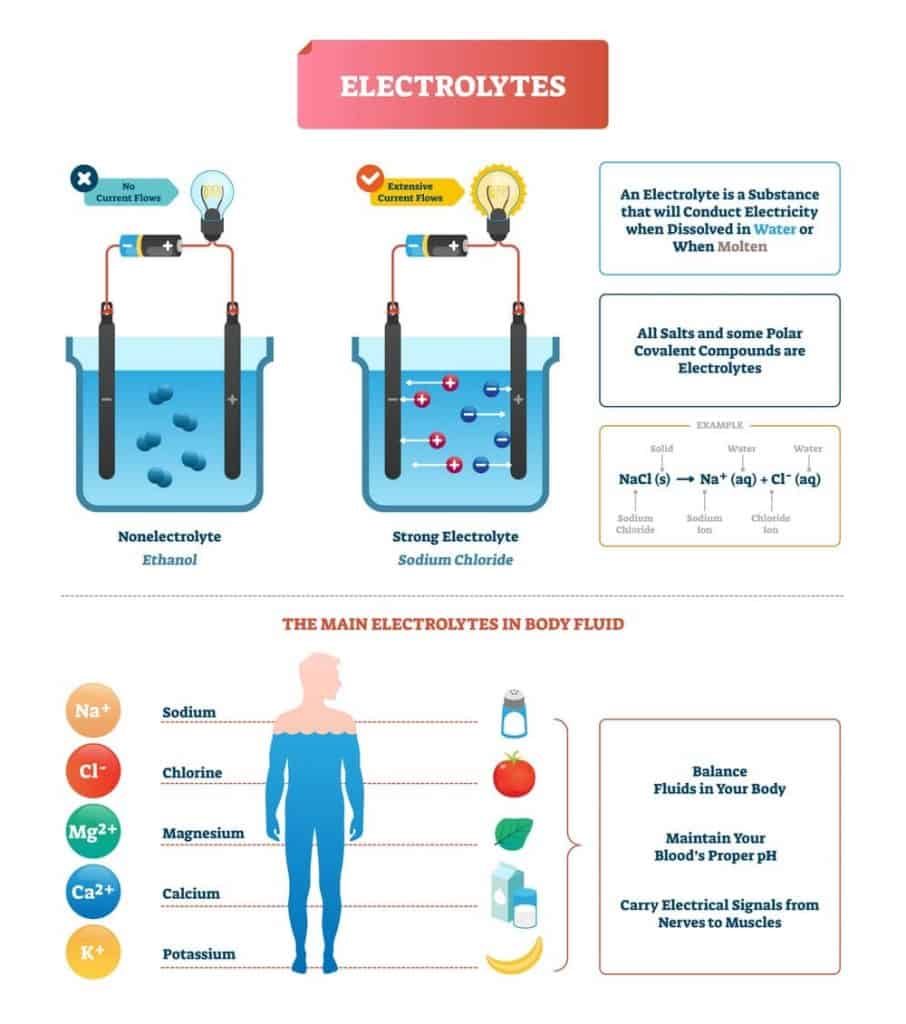
Sports drinks have been proven to increase the performance of athletes engaged in long and intense training sessions lasting for at least 60 minutes.
But if you’re just walking or jogging for less than an hour, then good old-fashioned water will do the trick.
Fall In Love With Running – What To Do Once You Finish Your Beginner Program
Are you ready to fall in love with running? If you’ve been following our 8-week running program for beginners you’ve probably already started to fall in love with running. Do these next four things and you’ll start loving it even more!
Enter a Race
If you’re not the competitive type, you should still enter a race, even if it’s just to compete with yourself.
Entering a race takes one of our first suggestions one step further. You already learned how important it is to set goals and have a plan. Entering a race gives you a clear goal to work towards while also adding a little accountability.
Click here to find upcoming races anywhere in the U.S. You may want to join something fun like the Vampire 5k.
To add even more accountability, as soon as you sign up for the race, share it on social media with your friends. Who knows? Maybe you could even motivate some of them to join you?
Something else that’ll help you enjoy your runs even more is better running gear. Here’s some of the best.
Get the Right Gear
Just like the running essentials enabled you to start off on the right foot, getting even better running gear will help you love your runs even more. Here are the top 3 things to look for:
- Better Shoes
- Running Smartwatch
- Wireless Headphones
Better Shoes
Once you’ve got a couple of 10ks under your belt and you have your sights set on a half-marathon, it’s time to start looking for some better shoes. It’s worth it to read plenty of reviews and to go to an athletic shoe store and get your feet professionally analyzed.
Most good athletic shoe stores will have machines that will do this for you and then can even suggest the best shoes for your foot type.
If you plan on putting on the miles then it’s worth it to invest in a good pair of shoes.
Running Smartwatch
Running watches have come a long way in recent years. If you’re thinking that a running watch is a chronometer with a lap function, then you’re way behind
Modern running watches have loads of functions. They can tell you things like your heart rate, stress levels, and VO2 max. Most have GPS so you can accurately track your speed and distance. Some come with navigation features so you’ll never get lost. And the best ones allow you to store onboard music so you can leave your phone at home and still have your favorite playlists.
But how are you going to listen to your favorite tunes? With an old-fashioned plug-in pair of headphones? I don’t think so. Check out the next piece of running gear.
Wireless Headphones
Running with the old plug-in wired headphones is more hassle than it’s worth. All you need is for your arm to catch on the cord and rip them out of your ears for you to get distracted.
It’s worth it to invest in a good pair. Be sure to look for something that is sweatproof and made to stay on your ear. Most sport headphones have a small piece that helps it hook onto your ear so they won’t fall out as you’re running.
Run With Friends
It’s never fun to go it alone. Having a core group of running buddies can provide a valuable combination of support and friendly competition.
If you’re having a down day and lack motivation, the fact that you’ve already planned a “running date” with some friends is motivation to get up and get going.

It’s important to be social for our emotional health. But some social activities end up doing more harm than good – like late-night clubbing and drinking – as well as requiring steady amounts of cash.
So what better way to spend time with friends than doing something that keeps you all healthy and doesn’t cost a lot of money!
Now That You’ve Learned How to Start Running – Let’s Get Going!
We could talk about running for ages but at some point, you just have to get out there and get started. Are you ready?
Check out our BONUS 8-week beginner running plan and go from the couch to a 5k in 8 weeks!
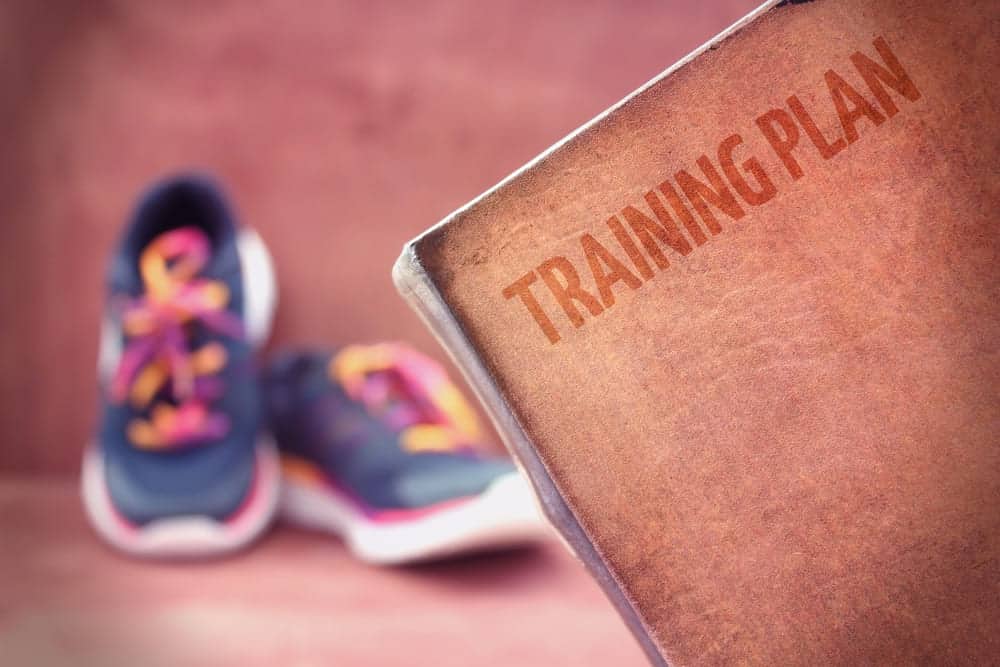
BONUS 8-Week Beginner Running Plan – From Couch to 5k
Before you start, read THIS: This plan is designed for someone who has led a mostly sedentary life for several years, but is still in good health and moderately active. If you are over 40 years old, have serious health issues or are taking any type of prescription medication, please consult with your doctor before beginning this program.
Warm-ups and cool-downs are not mentioned in the plan. Please follow the suggestions we gave earlier in this guide regarding warming-up for several minutes before running.
In addition to needing something to track your time, you’ll also need a way to record your distance. You can do this with the GPS on your phone or simply by mapping out some pre-planned routes ahead of time.
Let’s get started!
Week 1
Monday – 30-minute brisk walk, 3 times during those thirty minutes jog for 1 minute
Tuesday – 30-minute brisk walk
Wednesday – 30-minute brisk walk, 4 times during those thirty minutes jog for 1 minute
Thursday – 30-minute easy walk
Friday – 30-minute brisk walk, 5 times during those thirty minutes jog for 1 minute
Saturday – 30-minute brisk walk
Sunday – Rest
Week 2
Monday – 30-minute brisk walk, 2 times during those thirty minutes jog for 2 minutes
Tuesday – 30-minute brisk walk
Wednesday – 30-minute brisk walk, 3 times during those thirty minutes jog for 2 minutes
Thursday – 30-minute brisk walk
Friday – 30-minute brisk walk, 4 times during those thirty minutes jog for 3 minutes
Saturday – 30-minute brisk walk, 5 times during those thirty minutes jog for 1 minute
Sunday – Rest
Week 3
Monday – 30-minute brisk walk, 4 times during those thirty minutes slow jog for 3 minutes
Tuesday – 30-minute brisk walk
Wednesday – Run 3 minutes, Walk 1 minute – Repeat 6 times
Thursday – 30-minute brisk walk
Friday – Run 4 minutes, Walk 1 minute – Repeat 5 times
Saturday – 30-minute brisk walk, 4 times during those thirty minutes jog for 3 minutes
Sunday – Rest
Week 4
Monday – Run 4 minutes, Walk 1 minute – Repeat 5 times
Tuesday – 30-minute brisk walk
Wednesday – Run 5 minutes, Walk 1 minute – Repeat 5 times
Thursday – 30-minute brisk walk
Friday – Run 7 minutes, Walk 2 minutes – Repeat 3 times
Saturday – Run 4 minutes, Walk 1 minute – Repeat 5 times
Sunday – Rest
Week 5
Monday – Run 7 minutes, Walk 2 minutes – Repeat 3 times
Tuesday – 30-minute brisk walk
Wednesday – Run 9 minutes, Walk 2 minutes – Repeat 3 times
Thursday – 30-minute brisk walk
Friday – Run 11 minutes, Walk 2 minutes, Run 11 minutes
Saturday – Run 7 minutes, Walk 2 minutes – Repeat 3 times
Sunday – Rest
Week 6
Monday – Run 11 minutes, Walk 2 minutes, Run 11 minutes
Tuesday – 30-minute brisk walk
Wednesday – Run 15 minutes, Walk 2 minutes, Run 10 minutes
Thursday – 30-minute brisk walk
Friday – Run 20 minutes Walk 2 minutes, Run 10 minutes
Saturday – Run 12 minutes, Walk 2 minutes, Run 12 minutes
Sunday – Rest
Week 7
Monday – Run 20 minutes Walk 2 minutes, Run 10 minutes
Tuesday – 30-minute brisk walk
Wednesday – Run 20 minutes Walk 2 minutes, Run 15 minutes
Thursday – 30-minute brisk walk
Friday – Run 30-minutes
Saturday – Run 15 minutes, Walk 2 minutes, Run 15 minutes
Sunday – Rest
Week 8
Monday – Run 30-minutes
Tuesday – 30-minute brisk walk
Wednesday – Run 20 minutes, Walk 2 minutes, Run 20 minutes
Thursday – 30-minute brisk walk
Friday – Rest and get ready for your 5k
Saturday – Run 5 kilometers (3.1 miles) It should take you around 35-45 minutes.
Sunday – Party!!!
